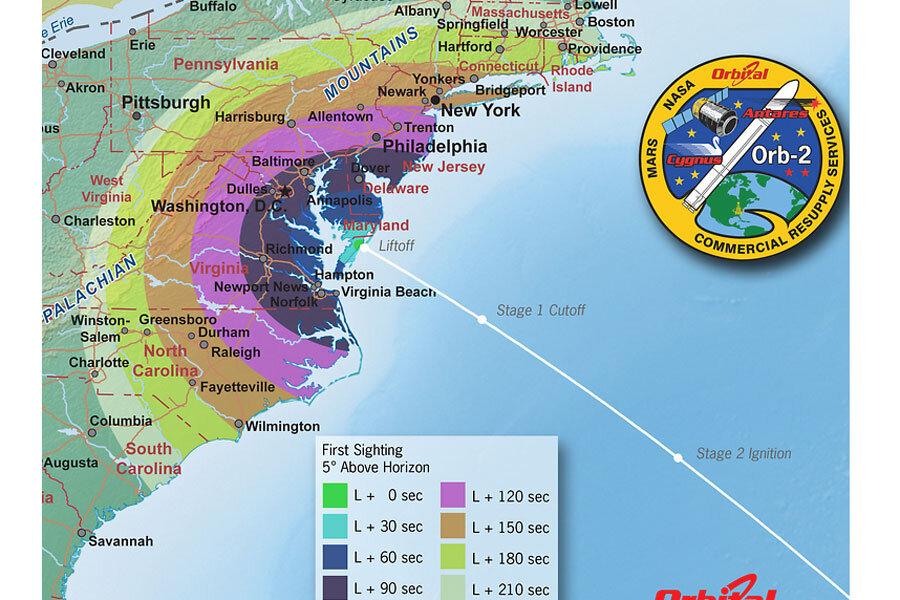How to watch the Antares rocket launch Sunday
Remember how folks used to flock to Cape Canaveral to watch the lift off of the latest NASA mission?
On Sunday, don't need to be in Florida. If you live on the East Coast between South Carolina and Massachusetts, go outside at around 12:52 p.m. EST and look up. Use the map above to see in which direction you should look.
The Orbital Science's Antares rocket is scheduled – weather and rocket systems permitting – to lift off Sunday, carrying a Cygnus capsule and 3,300 pounds of supplies to the International Space Station.
The launch is from NASA's Wallops Flight Center in Virginia, which means a large proportion of the East Coast could see the rocket heading into space.
The Antares rocket made its first successful flight in April 2013. Sunday's launch will be the third resupply mission to the ISS, and is part of NASA's $1.9 billion ISS resupply contract with Orbital Sciences Corp..
The other company NASA is paying to resupply the ISS is SpaceX which uses the Falcon 9 rocket. The first successful SpaceX mission to dock at the ISS was in May 2012. On Monday morning, a Falcon 9 rocket is scheduled to blast off from Cape Canaveral, Florida to put six commercial satellites into low-Earth orbit.
As The Christian Science Monitor reported "Orbital Sciences has been building satellites and building and launching rockets for more than 30 years. SpaceX was founded in 2002. Their approaches to designing and building their rockets are markedly different. SpaceX has prided itself on designing and building its hardware in-house..."
Orbital Sciences, on the other hand, has built its Antares rocket largely from hardware that already has been space tested, explains Lennard Fisk, a professor of space science at the University of Michigan at Ann Arbor and a member of Orbital Sciences' board of directors.
The company turned to Ukraine's Yuzhnoye Design Bureau to help with the tanks, pumps, and plumbing needed to support Antares's two liquid-fuel motors – themselves built in the former Soviet Union but modified for Antares by a US rocket-motor company. Yuzhnoye builds Russia's Zenit rockets.
The second stage is powered by a solid-fuel motor built by the company that produced the solid-fuel boosters for the space shuttle.
Of course, if you're not on the East Coast (or it's cloudy), you can watch Sunday's Antares launch online at NASA's TV channel. NASA coverage begins at noon.






